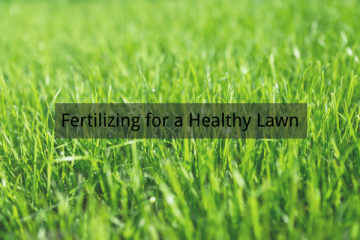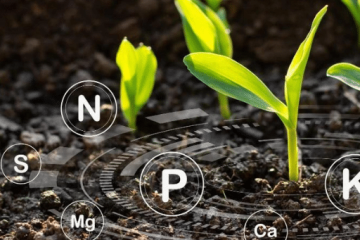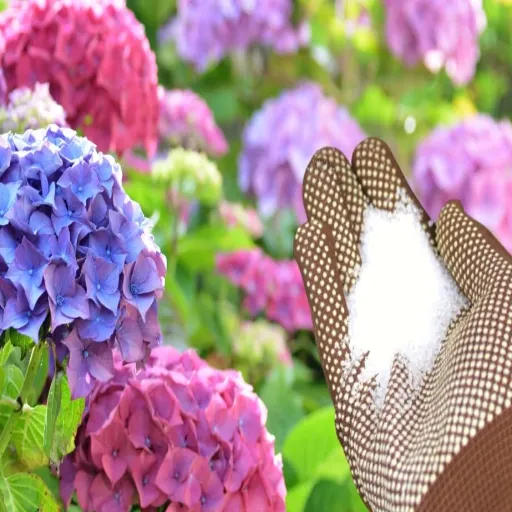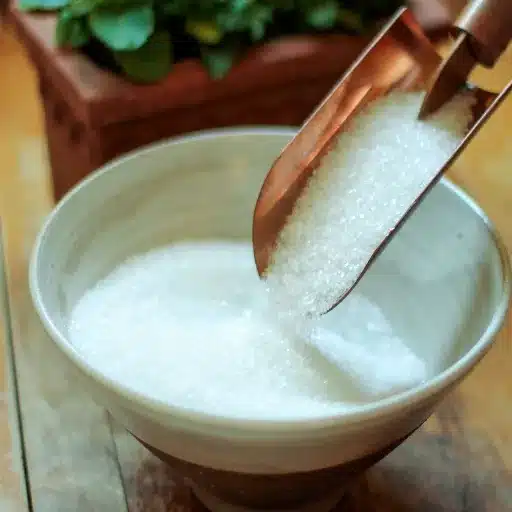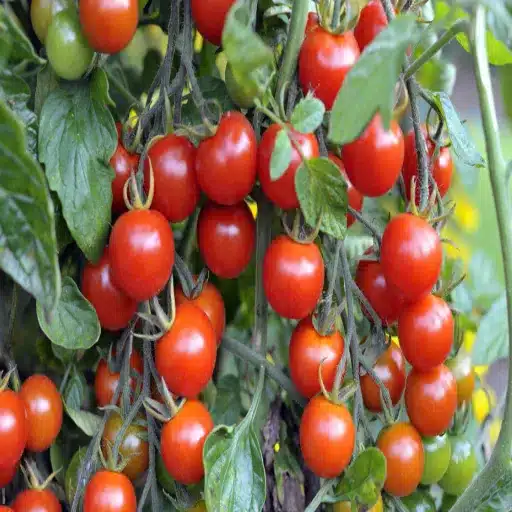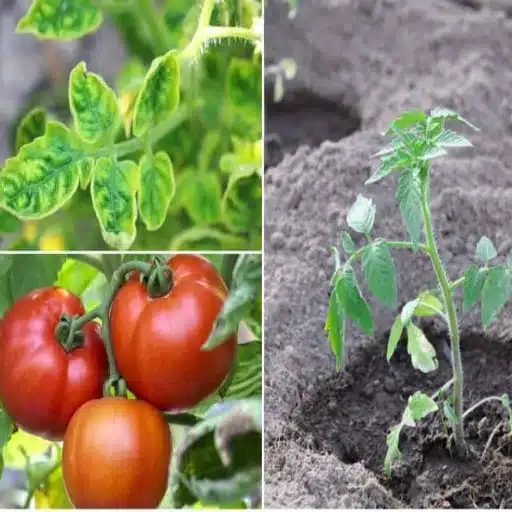Nature lovers are forever looking into simple, natural means of caring for their plants and making their garden an active and vibrant place. Epsom salt is one such secret, seemingly mundane yet with unexpected health benefits for flowers and plants. If you’ve been wishing for greener blooms, tougher stems, or healthier leaves, Epsom salt may well be your match in transforming the way your garden grows. This guide tells you all about the really great benefits that come from the use of Epsom salts, how they affect plants, and the best applications for gardeners. Get set to tap into the power of this all-natural remedy that will elevate your garden to another level!
Benefits of Using Epsom Salt for Plants
Improved Nutrient Absorption
Magnesium sulfate is the main chemical constituent of Epsom salt. Nutrient absorption in plants gets enhanced with the help of Epsom salt. Magnesium is very important for photosynthesis, while nitrogen, phosphorus, and potassium are also efficiently absorbed by plants in the presence of magnesium. Thus, here are five ways Epsom salt improves nutrient absorption in plants:
- Boosts Chlorophyll Production: Magnesium in Epsom salt is necessary for the synthesis of chlorophyll, which helps plants capture light more effectively for growth.
- Enhances Root Uptake of Nutrients: The sulfate from Epsom salt allows a better natural absorption process in the soil and permits easy uptake of nutrients by roots.
- Strengthens Cell Walls: Magnesium strengthens cell walls by allowing the uptake of calcium by plants, keeping them strong.
- Corrects Soil Magnesium Deficiency: When Epsom salt is added to magnesium-deficient soils, it directly fulfills this deficiency, thus aiding the plants.
- Improves Flowering and Fruit Production: With improved nutrient absorption, flowering and fruiting are stimulated, allowing for better garden health.
Use of an Epsom salt in the gardening process can bring forth these favorable factors, thus making your plants healthier and more productive.
Enhanced Chlorophyll Production
Epsom salt plays an essential role in stimulating the production of chlorophyll in plants. Chlorophyll, the green pigment found in the plant leaves, is crucial for photosynthesis, a process in which plants use sunlight to produce energy. Magnesium, one of the major constituents of Epsom salt, is a key stain in the molecular constitution of chlorophyll. Without enough magnesium, the yellowing of leaves may set in as an indicator of a shortage of chlorophyll, thus the lower photosynthetic activity.
Epsom salt being added into the soil ensures the magnesium supply to keep plants with their green, attractive foliage. This guarantees that sunlight will be captured, converted, and channeled to transfer energy to the plants for their growth and development. Regular application of Epsom salt will clear the symptoms of magnesium deficiency for the general health and vigor of plants.
Also, functioning chlorophyll help in nutrient synthesis efficiently, which sustains the metabolism. The plants thus gain inner strength with its stem formation, good flowering, and fruit setting. Application of Epsom salt in a balanced procedure of keeping a garden will thus remain an easy solution for apportioning essential nutrients for adequate plant growth.
Stronger Cellular Structure
A stronger cellular structure is a must for plants to survive environmental stresses while promoting general growth. Epsom salt helps strengthen plant cell walls by contributing to the supplementary synthesis of atomic phytochemicals required by these plants, thus giving a direct boost to the plant’s ability to withstand and prosper. Following are five relevant benefits supported by a stronger cellular structure due to Epsom salt:
- Better Resistance to Diseases – Plants whose cell walls stand strong are less attacked by pathogens, fungal attacks, or bacterial incursions.
- Enhanced Drought Tolerance – Fortifying cell walls allows the plants to retain water better, thus being more capable of enduring short periods of drought.
- Enhanced Nutrient Storage Capacity – Strengthened cells assist in the efficient storage of nutrients in plants, which would otherwise promote growth and development.
- Structural Support – Cellular strengthening supports a sturdy structure for stems and branches, reducing the risk of damage from wind or the weight of leafy canopies.
- Increased Photosynthesis Efficiency – Structurally sound cells provide chloroplasts with an environment to function efficiently to carry out photosynthetic activity and food production.
An addition of Epsom salt to your gardening regime will further these benefits that give rise to healthier, stronger, and more productive plants.
Understanding Epsom Salt: The Science Behind Its Benefits
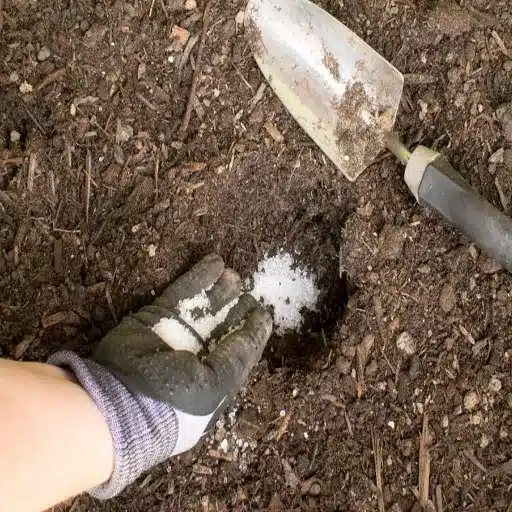
Role of Magnesium in Plant Health
Magnesium is necessary to keep healthy and to develop a plant. It is a vital component of chlorophyll without which plants could not carry out photosynthesis. Here are five helpful roles magnesium plays in maintaining plant health:
- Chlorophyll Production – Magnesium forms the nucleus of the chlorophyll molecules and hence is very much necessary for photosynthesis. This assures that plants capture sunlight efficiently to produce energy.
- Enzyme Activation – Magnesium acts as an activator of many enzymes in a plant: especially those concerned with energy generation, nutrient uptake, and protein synthesis.
- Enhanced Nutrient Transport – Magnesium aids the transport of essential nutrients and sugars within the plant, contributing to overall growth and the development of healthy tissues.
- Enhanced Cell Wall Stability – Magnesium is a major requirement in rendering the cell walls more stable and durable, thus lending plants with added structural integrity and protection against external stresses like pests and weather.
- Enhanced Crop Yield – Magnesium in an adequate amount enhances crop yield by transferring energy efficiently to life processes. This, in turn, duly enhances the life processes, which is directly responsible for the production of fruits, flowers, and seeds-number and quality-wise.
The multifaceted uses of magnesium portray its importance to a healthy and fully grown garden and crops.
Importance of Sulfur for Growth
Sulfur is an important plant nutrient. This element is needed for the generation of essential amino acids like cysteine and methionine that serve as building blocks for proteins; it is also part of some coenzymes and vitamins leading to important processes inside plants. Hence, sulfur assists chlorophyll formation directly, so it aids in photosynthesis and energy formation within the plant. With sufficient sulfur, plants have good growth, bright foliage, and resistance to disease.
In addition, an adequate supply of sulfur increases nitrogen use efficiency. Plants lacking sufficient sulfur will have a poor ability to metabolize nitrogen, which negatively affects their growth rate and quality of produce. Sulfur-deficiency symptoms observed in plants include pale, yellowish leaves and poor height. Such symptoms have a bearing on yields if untreated. Amendments and fertilizers with a balanced composition that contains sulfur, such as gypsum or ammonium sulfate, shall help replenish sulfur in sulfur-deficient soils.
The importance of sulfur fertilizer has become accepted in modern agricultural practice as a working response to changing agricultural needs. The fertilization with sulfur is said to increase crop productivity and improve the nutritional value of the product, particularly of crops in high need of sulfur, such as canola, broccoli, and onions. When sulfur management is considered as part of an integrated fertility program, it allows growers to maximize plant health and achieve sustainable agriculture.
How Epsom Salt Affects Soil Health
Coming under the chemical name magnesium sulfate (MgSO₄), Epsom salt has been popular as a soil remedy given that it is a source of magnesium and sulfur, which are two essential nutrients for plant growth. Magnesium is Physiologically important as a central atom in chlorophyll during photosynthesis, and sulfur is helpful in the formation of proteins and enzyme activity in plants. Hence, these fertilizers fit well for certain high-demand nutrient media such as tomatoes, peppers, and roses.
Once applied to soil, Epsom salt dissolves instantly, providing free nutrients for absorption by the plants. Greatest emphasis is placed upon correcting any deficiencies of magnesium or sulfur that could stand in the way of healthy and productive plants. A n example of this is where sandy soils or those with pH imbalances often do not contain enough magnesium and hence, have magnesium deficiency symptoms like yellowing of leaves and stunted growth. Rectifying such an imbalance by use of Epsom salt amendments is one very quick and effective way of doing so. Sulfur from Epsom salts also aids in the synthesis of essential oils, proteins, and vitamins, all of which lead to higher crop quality and yield.
⚠️ Important Note: While Epsom salt can be advantageous for soils, it has also become something that should be administered in careful quantities to avoid overdoing it. Excess magnesium tends to inhibit the uptake of other essential nutrients such as calcium and potassium, thereby creating soil chemistry imbalances. Soil tests should serve as the basis before application since it is necessary to know if additional magnesium or sulfur is needed. Applying Epsom salt in conjunction with a broader soil fertility program provides the best chance for optimum plant health and sustainable agriculture.
How to Apply Epsom Salt in the Garden
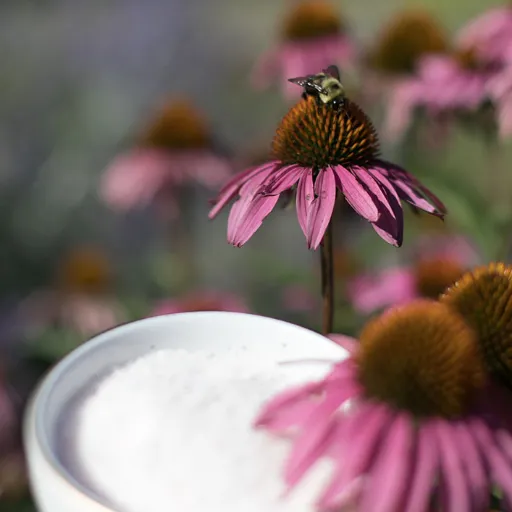
Ideal Concentrations for Soil Drenches
When used as a soil drench, Epsom salt must be delivered in the correct concentrations. Otherwise, there may be an overload of magnesium or sulfur in the soil. Typically, 1 tablespoon of Epsom salt mixed in 1 gallon of water is used for most types of plants. The solution is mild enough to prevent nutrient imbalances yet sufficient to impart magnesium and sulfur necessary for the healthy growth of plants. This application is usually repeated every four to six weeks throughout the growing season for satisfactory maintenance of most gardens.
Adjustments have to be made for specific crops as nutrient requirements vary. For example, tomatoes and peppers are usually more wary of magnesium deficiency and require a slightly stronger dose of 2 tablespoons of Epsom salt per gallon of water. In contrast, a diluted mixture would need to be applied to more vulnerable plants, such as herbs and tender seedlings, to avoid saturating their root systems. Always observe the plant’s condition after applications and adjust concentrations as suitable.
Timing must be kept in view also when applying soil drenches. Whenever the solution can be applied in the early morning or late in the evening, evaporation will be minimized so that nutrients penetrate cells and soil toward the roots of the plant. More application is done by evenly drenching over the soil at the bottom of the plant for equal nutrient science. Avoid Epsom salt usage in excess because improper or excessive usage can invariably do more harm than good to soil health. Hence, reviewing soil-testing results and keeping an eye on plant performance remains the key to a balanced and thriving garden ecosystem.
Best Practices for Foliar Sprays
In foliar applications, nutrients or remedies are supplied through the leaves, with direct absorption from the leaf surface occurring at a very fast rate. Some important practices to enable optimal foliar spray benefits while safeguarding the plants are:
- ✓Correct Timing: Foliar sprays should be applied in early mornings or late evenings when cool temperatures and reduced sunlight prevents the possibility of leaf burn and aid maximum nutrient uptake.
- ✓Correct Concentration: Never use a concentration greater than the recommended levels, as this could burn the leaf surfaces or may even cause nutrient imbalance depending on the surplus element being applied. Always dilute the spray according to directions stated with the product.
- ✓Correct Application: Make sure the spray solution covers the leaf surface evenly and thoroughly, covering more on the leaf lower leaf surface since stomates are mostly abundant there for better absorption and utilization by the plant.
- ✓Weather: Wind or rain should not be present during spraying as their presence would render least efficacy by causing uneven distribution or wash-away of the solution.
- ✓Continuous Watching: Keeping an eye on your plants for signs of over-application will keep those sprays in check. Indicators that it’s time to cut down on frequency or strength include leaf discoloration, wilting, etc. Changes in seasons also provide a clue.
Following these guidelines will make foliar sprays an effective adjunct in your garden-care program to correct nutritional deficiencies or to take care of pest problems. Therefore, by forging on through the cycle of consistency and balancing the feeding from the soil with the foliar ones, your plants will come through healthy and strong.
Optimal Timing for Application
Foliar sprays have to be given at the correct time for maximum effect and reducing waste. Five major timing points give the best time window to foliar sprays:
- Early Morning: Generally, stomata (tiny openings on leaves) of plants stay open during cool and humid morning conditions, aiding in absorption. Another benefit of early morning application is reduced risks of evaporation.
- Late Afternoon or Early Evening: This is when the temperature starts to drop, and sunlight is less intense, thus working against quick evaporation of foliar sprays and minimizing the leaf burn caused by sunlight-grain interaction on residue.
- During Active Growth of Plants: During active growth stages, such as during vegetative or flowering stages, foliar sprays are applied at great demand of nutrients.
- During Mild Temperature: Avoid very hot or cold temperatures. A mild temperature of around 65–80°F (18–27°C) ensures the absorption of the spray without the stress of the plant.
- After Rain or Irrigation: Leaves having been subjected to heavy rains or water, it would be great if one waits for the leaves to dry before foliar spraying. This is important so that the solution in the spray adheres properly to the surface of the leaves.
Following the above shall help the applicator get even more out of foliar feeding.
Common Misconceptions and Risks
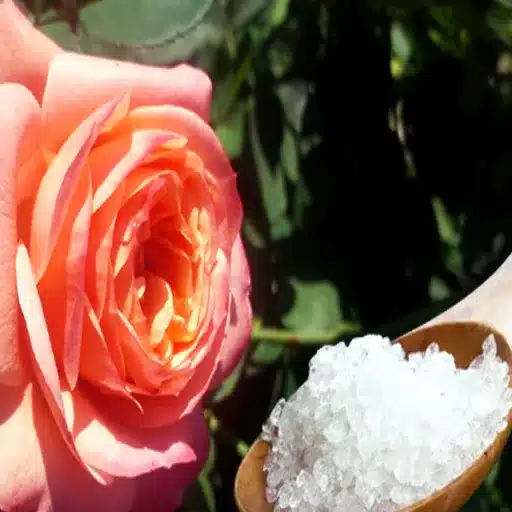
Understanding Magnesium Deficiency
Magnesium deficiency in plants is a commonplace deficiency that impairs the performance and productivity of such plants. Magnesium is a vital macronutrient, with its primary role in the synthesis of chlorophyll, which is necessary for photosynthesis. If plants are deficient in magnesium, the sunlight is inefficiently converted into energy and produce symptoms such as chlorosis between veins in older leaves and stunted growth.
In recent studies, it is found that magnesium deficiencies arise because of acidic soils or nutrient imbalance introduced by excess potassium, calcium, or ammonium interfering with the uptake of magnesium by plants. This can be overcome by the gardener through magnesium fertilization by using Epsom salts or dolomite lime, which improves both the magnesium status and pH balance of the soil. Carrying out periodic soil tests is also important to monitor nutrient availability and to remedy deficiencies as soon as possible.
Preventing the long-term effects of magnesium deficiency on plants by recognizing its symptoms, causes, and remedies is apt for fostering growth that is more healthy and productive.
Overuse and Its Consequences
While magnesium is very important for the health of plants, improper use of magnesium fertilizers often leads to unexpected consequences. Overuse of magnesium supplements like Epsom salts or dolomite lime leads to nutrient imbalance in soils. Too much magnesium in soil might interfere with the absorption of other essential nutrients like calcium and potassium, leading to what are called secondary nutrient deficiencies. These imbalances may be manifested through a reduction in plant growth, flowering, and fruit production, thereby affecting the total yield.
Another very important consequence is that the excessive one would damage the soil structure and chemistry. Increasing magnesium in the soil could lead to compaction since magnesium ions can adhere strongly to soil particles. This would also resurface to less favorable conditions for root development, as lesser aeration and permeability of water would be available in the soil. Defunct soil will gauge the activity of microbes after some time, and these microbes are critical in nutrient cycling, so a certain level of debasement is assured.
On the environmental side, excess magnesium and nutrient runoff may be generated, especially from sandy soils or highly irrigated ones. This runoff affects water bodies around them and changes the chemistry of water or promotes algal blooms, thus defeating aquatic ecosystems. To address the problem, magnesium levels should be carefully monitored through soil testing, and recommended application rates must be observed. Through balanced nutrient management and elimination of over-application, farmers and gardeners can ensure healthy soils with the bigger ecosystem preserved.
Preventing Blossom End Rot in Tomatoes
Blossom end rot in tomatoes is generally considered a physiological disorder brought on by calcium deficiency in the developing fruit. The problem can arise not from actual lack of calcium soil but from irregular water uptake that prevents calcium transportation into the fruit. Factors that can further contribute to the trouble include uneven watering, drought stress, or over-application of nitrogen fertilizers.
To prevent blossom end rot, the soil should never go through periods of drying and wetting. Regular watering should be undertaken, especially through drought periods. Mulching the tomato plants maintains adequate soil moisture and also keeps temperature steady. If calcium levels are found to be deficient through soil testing, amendments such as agricultural lime or gypsum may be incorporated before planting. Be careful not to provide too much nitrogen fertilizer, as this will encourage too much vegetative growth at the expense of calcium availability to the fruits.
Growing in soils that are well drained and rich in nutrients and planting tomato cultivars resistant to blossom end rot should further diminish risks. By following those practices, along with careful monitoring and prompt intervention, good yields and the proper development of healthy fruit will be assured throughout the season.
Practical Tips and Best Practices
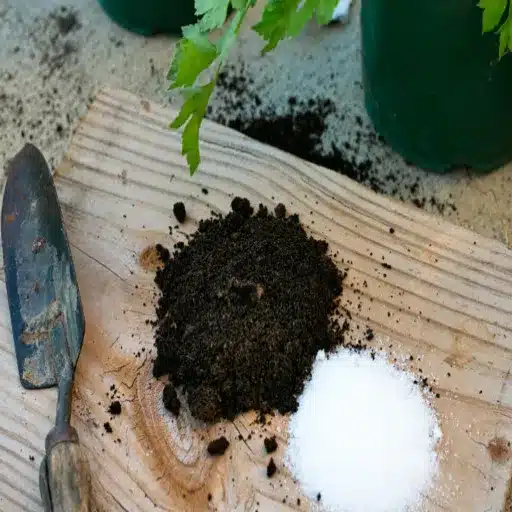
How Much Epsom Salt to Use
Most recommendations treat Epsom salt as a gardening aid. Applied correctly, Epsom salt benefits plant health. Magnesium sulfate is its chief ingredient, which comes to the rescue when plants are deficient in magnesium; it thus helps in nutrient intake and photosynthesis. Tomato plants commonly need one or two tablespoons of Epsom salt per soil application at the plant base, every four to six weeks throughout the growing season. This way, magnesium will be released steadily in support of the plants without overburdening the soil.
In dissolving Epsom salt in water, a standard ratio is one tablespoon per gallon. This water mixture is used either as a foliar spray to give magnesium to the leaves directly or as a soil drench for absorption at the roots. Foliar sprays are applied once a month, ensuring all plant foliage is covered but cannot really take soaking by that time. For soil drenching, apply the solution to the base of the plants once weekly or bi-weekly and then monitor plant response, and adjust dosage or frequency accordingly based on the observation of plant health and growth rate.
⚠️ Important Warning: Although Epsom salt has some specific efficacy for plants, overuse may upset the soil balance or cause nutrient antagonism, especially if the plant is not deficient in magnesium anyway. A soil test is urged before deciding to apply Epsom salts. Excessive doses might instead suppress calcium or potassium uptake, which is detrimental to blossom end rot and stunted growth, respectively. Epsom salt is thus best applied in careful doses stimulated by observed plant needs to achieve healthy growth of plants without further damaging soil condition.
Identifying Plants that Benefit from Epsom Salt
Many plants benefit from Epsom salt application because of magnesium sulfate composition that helps support important physiological processes. Vegetables like tomatoes, peppers, and eggplants tend to respond positively to Epsom salt as they usually require more magnesium for fruit production. Magnesium deficiencies show up as yellow leaves with green veins, known as interveinal chlorosis. Applying Epsom salt to the soil or as a foliar spray can help alleviate these deficiencies and contribute toward healthy, vigorous growth.
Flowering plants, especially roses, are known to thrive with periodic doses of Epsom salts. The magnesium helps the roses to produce chlorophyll more abundantly and absorb nutrients better, allowing them to put on a show of lush blooms and foliage. Gardeners have long stated that roses with Epsom salt treatment have bigger and better-colored flowers than untreated ones, mainly while being treated during the growing season. Results can be seen when a few tablespoons of the Epsom salt are incorporated into the soil around the rose bushes or dissolved in water and applied directly to the plants.
Further along the spectrum of vegetables and flowering plants are certain ornamental shrubs and trees, such as azaleas and rhododendrons, that could also use a dose of magnesium particularly on soils that are deficient in magnesium. These plants need good leaf development and general plant health-to-phenomenal displays of color during flowering-that depend directly on magnesium. It is, however, important to tailor Epsom salt use to each specific plant and to keep other soil nutrients in balance so that the interactions do not turn adverse.
Combining Epsom Salt with Other Fertilizers
The availability of magnesium and sulfur makes Epsom salt an important slow-release fertilizer when combined with other fertilizers for nourishment of plants. These are essential nutrients that complement primary fertilizers such as nitrogen, phosphorus, and potassium to provide plants with a balanced nutrient profile. For example, Epsom salts, combined with a fertilizer rich in nitrogen, would act against toxicity by ensuring that magnesium levels remain sufficient. Such a supportive synergy helps plants during crucial growth or blooming activity.
This regimen is quite beneficial for a vegetable garden. While the compost provides soil enhancement through macronutrients and physical structuring, Epsom salts fill in for any specific deficiency by delivering important micronutrients. Magnesium deficiency is rather common with tomatoes, peppers, and roses, and combining Epsom salts with conventional fertilizers will make sure these plants are supported without risking over-fertilization.
To achieve best results, soil testing prior to the application of Epsom salts along with other fertilizers is needed. By being sure that this particular combination compensates for the actual deficiencies in the soil, one avoids possible nutrient imbalance. While keeping in mind the recommended application rates of Epsom salts and all other supplements, overapplication must never be done because this could pile up salts in the soil that can be detrimental to the roots of plants. Optimized planning and monitoring will help in having a healthy plant with plants growing lustily of all the types.
Quick Reference Guide
| Application Method | Concentration | Frequency |
|---|---|---|
| Soil Drench (General Plants) | 1 tablespoon per gallon of water | Every 4-6 weeks |
| Soil Drench (Tomatoes/Peppers) | 2 tablespoons per gallon of water | Every 4-6 weeks |
| Foliar Spray | 1 tablespoon per gallon of water | Once a month |
| Direct Soil Application | 1-2 tablespoons at plant base | Every 4-6 weeks |
References
- 📚
University of Minnesota Extension: Coffee grounds, eggshells, and Epsom salts in the home garden– This source discusses the potential benefits and risks of using Epsom salts in gardens, emphasizing its use only in cases of magnesium deficiency. - 📚
Washington State University: Epsom Salts PDF – This document explores the effects of Epsom salts on plants, including its role in addressing magnesium deficiency and its limited impact on yield. - 📚
Newbury NH Beautification Committee: Gardening Tips – This page explains how Epsom salt (magnesium sulfate) can help plants develop stronger root systems and improve chlorophyll uptake. - 📚
- Click here to read more.
Frequently Asked Questions (FAQ)
Q: What is Epsom salt and how does it serve flowers and plants?
A: Epsom salt gets its name from a natural mineral compound made of magnesium and sulfate. For flowers and plants, having this can mean healthier growth, quicker seed germination, and preventing the leaves from turning yellow. Magnesium assists the plants in assimilating nutrients and transforming sunlight into energy, which works toward greener leaves and more colorful flowers.
Q: How can I apply Epsom salt to care for my plants?
A: You can apply this salt directly into the soil or prepare an Epsom salt solution. Sprinkle about a cup of Epsom salt either in the planting hole or around the base of your plants for soil application. For the leaf spray method, dissolve 2 tablespoons of Epsom salt in a gallon of water and spray it on the leaves every two weeks.
Q: Which plants benefit most from Epsom salt?
A: There are certain plants that benefit from Epsom salt. Among others, tomatoes, roses, and peppers benefit. These are plants that absorb magnesium and sulfate to speed up their growth and improve flower production. Other plants that require extra nutrition or may be in distress might also benefit from Epsom salt.
Q: Can yellow leaves be prevented by Epsom salt?
A: Yes, Epsom salt is a defensive ingredient to prevent yellowing of plant leaves. The magnesium in Epsom salt aids in the production of chlorophyll, which is responsible for green leaves. Sometimes yellowing occurs due to the deficiency of that nutrient, and with the help of Epsom salt, the matter can be resolved.
Q: How frequently should I treat my garden plants with Epsom salt?
A: The treatment should be done every two weeks for better results. Applying Epsom salt at this interval helps maintain the plants’ supply of magnesium and sulfate on and off while they thrive and develop stronger as time passes.
Q: Is Epsom salt applicable to indoor plants?
A: Yes, you can use Epsom salts for indoor plants as well. Just make sure to dilute it before using it. Nutrients in Epsom salt will benefit indoor plants, and a light dusting of Epsom salt on soil or diluted solution as a spray can reinforce this.
Q: How is an Epsom salt solution best prepared for plants?
A: To prepare Epsom salt solution, dissolve 2 tablespoons of Epsom salt in one gallon of water. This diluted Epsom salt solution can then be used to water the plants or to spray on the leaves, enabling absorption of the nutrients by the plants.
Q: Do all plants react positively to Epsom salt?
A: Well, a lot of plants like it, but not all react positively. Some plants may not require additional magnesium. The trick is to observe the needs of your particular plants. If they show signs of nutrient deficiency or stress, Epsom salt may be helpful.
Q: Is Epsom salt environmentally friendly for gardening?
A: Yes, Epsom salt is known to be environmentally friendly. Since it’s a natural mineral compound for improving the soil quality and complementing the advancement of healthy plants rather than many fertilizers that have adverse effects, Epsom salt in your garden will truly make a sustainable difference.
Ready to transform your garden with the power of Epsom salt? Start implementing these tips today and watch your plants thrive with healthier foliage, stronger stems, and more vibrant blooms!

